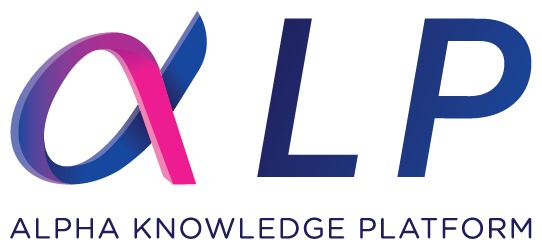Stablecoins 2030 - Driving Institutional Stablecoin Adoption
Our Managing Partner served as a contributor to this insightful report, offering invaluable expertise on the evolving stablecoin landscape. Enjoy!
The world of digital assets is undergoing a profound transformation, moving rapidly from niche innovation to foundational institutional infrastructure. According to analyses published in 2025, the year was predicted to be “blockchain’s ChatGPT moment, with stablecoins igniting the shift”. Just six months later, this transformation is unfolding at a remarkable pace, confirming predictions that stablecoins are the catalyst for institutional adoption.
Stablecoins are privately issued digital assets, typically pegged to a major currency like the U.S. dollar (USD), designed to maintain a stable value. They achieve this stability by being backed by high-quality collateral, such as reserves of cash or short-term U.S. Treasuries, and they operate on public or permissionless blockchains. This design merges the inherent stability of traditional money with the technological benefits of digital assets.
For institutions, understanding the current growth trajectory and future scale of this market is a strategic imperative.
1. Surging Growth and Staggering 2030 Forecasts
The stablecoin market has demonstrated explosive growth driven by the crypto-native ecosystem, e-commerce/digitally native companies, and international demand for holding USD.
The aggregate supply of stablecoins surged from approximately $200 billion at the start of 2025 to about $280 billion by September 2025, representing a significant year-to-date increase. This strong market momentum has led experts to significantly revise future projections upwards:
- The 2030 Base Case forecast for stablecoin issuance has been revised from $1.6 trillion to $1.9 trillion.
- The Bull Case forecast has increased from $3.7 trillion to $4.0 trillion.
Beyond issuance volume, the economic impact is measured through transaction velocity, or how frequently the money changes hands. Historically, driven heavily by crypto trading, stablecoin velocity reached 113x in 2024. Looking ahead to 2030, experts project a more normalized velocity of 50x, similar to traditional payment rails.
Based on this 50x velocity assumption:
- The base case market size ($1.9 trillion) could support nearly $100 trillion in annual transaction activity by 2030.
- The bull case market size ($4.0 trillion) could reach $200 trillion.
However, it is crucial to remember that while these figures are vast, they remain small relative to traditional money flows; for instance, leading banks today move $5-$10 trillion per day.
2. The Core Drivers of Stablecoin Adoption
The acceleration towards mainstream stablecoin adoption is being fueled by a convergence of technological maturity, regulatory clarity, and practical institutional infrastructure.
2.1 Regulatory Clarity as a Catalyst
Regulatory change has been a major “game changer”. The passage of the GENIUS Act in the United States, signed into law in July 2025, provides a pro-innovation and pro-dollar legislative framework for stablecoins. This legislation, along with initiatives like the SEC’s Project Crypto, is “unshackling large organizations” and providing the necessary confidence for institutions to engage with digital assets.
Globally, other jurisdictions are following suit, with Hong Kong introducing a licensing framework in August 2025, the UK unveiling proposals for GBP-backed stablecoins, and Japan licensing yen-backed stablecoins.
2.2 Institutional Infrastructure Maturation
The core infrastructure necessary for issuing, storing, and settling digital money is reaching production-grade maturity. Key infrastructural drivers include:
- Payment Network Integration: Major card networks are beginning to support stablecoin settlement, providing familiar on-ramps for users and merchants.
- New Layer-1 Chains: A wave of new layer-1 blockchains is emerging, designed specifically for financial applications, offering enterprise-grade compliance and faster settlement finality. Companies like Circle and Stripe are launching their own layer-1s to gain control and optimize for specific use cases like high-volume payments.
- Growth of Tokenized Assets: As assets like bonds and equities are increasingly tokenized, stablecoins become the default settlement layer, providing the necessary liquidity and interoperability for these emerging markets.
3. Stablecoins: Transforming Corporate Payments and Treasury
For corporate treasurers and CFOs, on-chain digital money presents a solution to the long-standing problem of liquidity latency, driving a paradigm shift toward “real-time everything”. This means cash no longer sits idle in multi-day settlement cycles, allowing corporates to optimize working capital continuously.
Key corporate use cases for stablecoins include:
- Cross-Border B2B Payments: This is highlighted as one of the most compelling use cases, especially for Small and Medium-sized Businesses (SMBs) who are historically underserved by traditional, slow, and fragmented cross-border payment rails. Stablecoins offer reduced reconciliation burdens, fewer intermediaries, and programmability, leveling the playing field for these firms.
- Collateral Management: Stablecoins are identified as the “killer app” for collateral management, enabling real-time, programmable settlement across asset classes. This unlocks capital efficiencies and frees up balance sheets.
- Corporate Issuance: Digitally native companies and e-commerce giants, including PayPal, Walmart, Amazon, Alibaba, and JD.com, are exploring issuing their own proprietary stablecoins. Motivations include cost reduction, strategic independence, and the creation of new revenue streams from float income.
4. The Future is Co-existence: Stablecoins vs. Bank Tokens
The future of on-chain money is not seen as a “digital format war” with a single winner. Instead, stablecoins, Central Bank Digital Currencies (CBDCs), and bank tokens (tokenized deposits/deposit tokens) will co-exist, each finding product-market fit based on user needs, trust, and regulatory clarity.
For large, risk-averse multinational enterprises, bank tokens are often preferred over public-chain stablecoins due to the inherent trust, familiarity, and regulatory safeguards of commercial bank money. Bank tokens are direct digital representations of commercial deposits and can be integrated more easily into existing treasury and payment workflows.
In a surprising projection, transaction volumes for bank tokens are estimated to reach $100 trillion to $140 trillion by 2030, potentially exceeding the transaction volumes of stablecoins.
5. Geopolitical Implications: Extending Dollar Dominance
The dominance of USD-backed stablecoins carries significant macroeconomic implications, positioning them as a potential “Eurodollar 2.0”. The base case forecast for 2030 assumes that approximately 90% of the stablecoin supply will remain dollar-denominated.
This widespread adoption is expected to reinforce the U.S. dollar’s global supremacy in the digital age.
The Demand for U.S. Treasuries
A direct consequence of dollar-based stablecoin growth is the immense demand created for U.S. government securities, which are held as backing collateral. Experts project that stablecoin issuers could drive over $1 trillion in additional demand for U.S. Treasuries by 2030 in the base case scenario. By 2030, stablecoin issuers could collectively hold more U.S. Treasuries than any single foreign country today.
Risks for Developing Economies
However, this digital dollarization creates significant risks for emerging and developing economies with volatile currencies. These adverse implications include:
- Loss of Monetary Sovereignty: The substitution of local currencies with dollar-backed stablecoins reduces demand for domestic money, eroding the central bank’s control over interest rates and inflation targeting.
- Capital Flow Volatility: Stablecoins offer a low-friction method for capital flight during crises, potentially destabilizing currency pegs and triggering shocks in local markets.
6. Challenges on the Path to Mass Adoption
Despite powerful tailwinds, several strategic challenges must be addressed for stablecoins to achieve full institutional integration.
- Fragmentation and Interoperability: The ecosystem is fragmented across multiple stablecoin formats and blockchain networks, necessitating greater interoperability to prevent the creation of digital silos.
- Privacy Concerns: For large corporates, the transparency inherent in public blockchains can expose sensitive data (e.g., transaction pricing and supplier terms), posing a risk to competitiveness and conflicting with confidentiality obligations.
- Accounting Treatment: A breakthrough catalyst would be official accounting recognition of stablecoins as cash equivalents under IAS7. Currently, without guaranteed redemption mechanisms for all users, they remain classified as less attractive financial instruments (IAS32).
- Trust and Scalability: For large-value capital markets transactions, current stablecoin scalability and liquidity may be insufficient, leading risk-averse corporates to prefer regulated banks for high-value settlements.
The road ahead requires continued maturity of privacy-preserving technologies like Zero-Knowledge Proofs (ZKPs) and persistent work to integrate these new rails with legacy accounting and ERP systems.
Conclusion: Navigating the $1.9 Trillion Stablecoin Future
The surge in stablecoin adoption confirms that the market is rapidly moving past its “dial-up phase”. With the 2030 base case forecast for issuance volume revised upward to $1.9 trillion, and the potential to support nearly $100 trillion in annual transaction activity, stablecoins are cementing their role as foundational infrastructure for global commerce and finance.
Regulatory clarity, spearheaded by legislation like the GENIUS Act in the United States, has acted as a “game changer,” providing the confidence needed to “unshackle large organizations” for institutional adoption. This momentum validates the prediction that 2025 marked “blockchain’s ChatGPT moment”.
However, the future of on-chain money is characterized by co-existence, not format war. Stablecoins are thriving alongside emerging bank tokens (tokenized deposits). Due to the trust and regulatory safeguards they offer, bank tokens are preferred by many large corporations, with their transaction volumes potentially exceeding stablecoins by 2030, reaching up to $140 trillion.
Ultimately, the focus is shifting away from the underlying blockchain technology towards the tangible results: providing real-time liquidity, reducing cross-border friction for SMBs, and enabling programmable finance. Addressing remaining challenges such as interoperability, scalability, and privacy concerns using solutions like Zero-Knowledge Proofs (ZKPs) will be essential to fully integrate stablecoins into the global financial system. Stablecoin 2030 is rapidly becoming the blueprint for a smarter, faster, and more inclusive global financial architecture.
Our Managing Partner served as a contributor to this insightful report, offering invaluable expertise on the evolving stablecoin landscape. Enjoy! Click Here
Weekly Regulated Digital Currency News: Click Here






